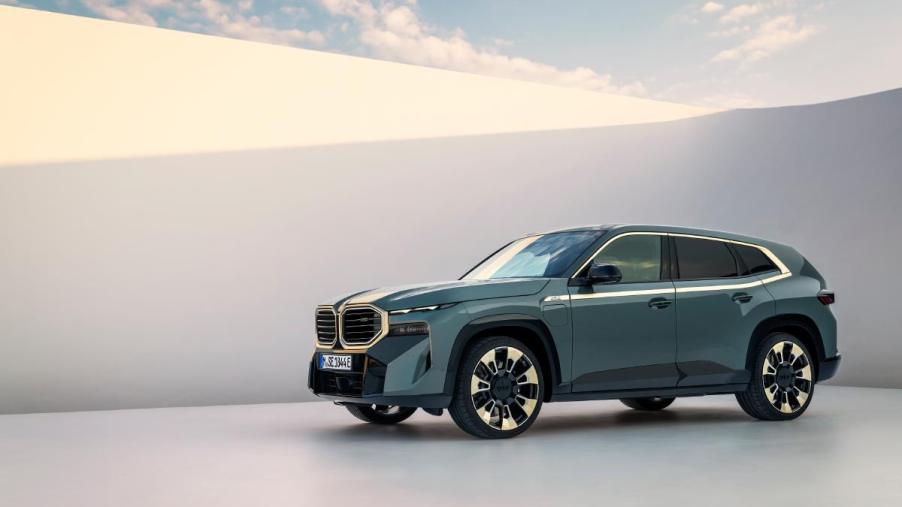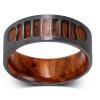
The 2024 BMW XM Plug-in Hybrid Is Stunningly Inefficient
The BMW XM has several noteworthy characteristics, including that it’s the first M-exclusive model since the M1, its $159,000 asking price, a three-ton curb weight and styling that hasn’t exactly won any beauty contests. Of course, its 644-horsepower is certainly notable, as well. The XM’s plethora of power comes via BMW’s tried-and-true 4.4-liter V8, but in the XM, it pairs with an electric motor and battery pack to make the super SUV a type of model that didn’t exist when M’s original exclusive model was introduced—a plug-in hybrid.
So, does the XM’s PHEV powertrain make it suitable for one-percenters who want superlative SUV performance while still saving a bit on the costs of premium fuel? Erm, not really.
Real-world test: The BMW XM chugs fuel
A week behind the wheel of the 2023 BMW XM underscores the importance of installing a home charger along with BMW’s questionably styled super SUV. With its batteries fully charged, the EPA rates the XM for 31 miles of all-electric driving range and 73 MPGe, respectable figures for a PHEV SUV, to be sure.
But that begs the question—how efficient is the XM when that juice runs out? In short, not very.
During my week’s test, which was split evenly between highway miles and those around town, the XM managed just 14.8 mpg. That’s actually better than the XM’s 14 combined mpg rating from the EPA.
But what’s more notable about this figure is I was hardly unleashing the XM’s full capacity during this test period. I made it a point to try and drive the XM as I believe its buyers would—with reasonable constraint but letting my right foot get a bit heavy when encountering some open road or twisty switchbacks.
Still, the XM netted me about the same mpg as one can expect from a heavy-duty pickup, even if about half the miles I traversed were done in a drive mode meant to recoup as much energy as possible for the battery pack. I netted myself one mile of all-electric range.
Therefore, keeping the battery pack—which is a massive-for-a-hybrid 29.5-kWh unit—fully juiced is crucial to getting any reasonable efficiency out of the XM when it’s used in everyday driving situations.
I had planned to fully recharge the batteries and get mpg figures when the hybrid system is operating at full capacity and to drive the XM exclusively on electric power, but one of its tires decided it couldn’t be bothered to continue retaining air.
I awoke on the morning of my planned economy run, followed by a prospective recharge and all-electric drive, to find a flat right front tire. And your local tire shops don’t exactly stock Pirelli P Zero 275/35/R23 tires on the shelves.
So, that will have to wait for the 2024 model, I suppose.
No matter, if you are planning on dishing out upwards of $160,000 on an XM, make sure to keep its battery pack juiced to avoid additional hits to your wallet that come via 15 combined mpg from top-tier gasoline.
Will BMW XM buyers care about its inefficiency? Probably not
It’s safe to presume BMW’s M division wasn’t planning to appeal to fuel-conscious shoppers when developing a 6,000-pound SUV powered by a twin-turbocharged V8. In fact, it’s reasonable to suspect the decision to add an electric motor to the XM was based purely with performance in mind.
And I’ll go out on a limb and say most XM buyers there have been over 1,200 of them this year through September according to GoodCarBadCar—aren’t overly concerned with being “green” or saving dough at the pumps, either.
The fact the XM delivers about 30 miles of driving range and can sip fuel a bit more parsimoniously when the battery pack has a charge seems like a convenient byproduct of hybridization. Consider it malicious compliance with the automotive industry’s push toward electrification.
“Sure, we’ll make our new SUV a plug-in hybrid, but we’re going to pair its electric motor with a big-ass V8,” BMW M appears to have said.



